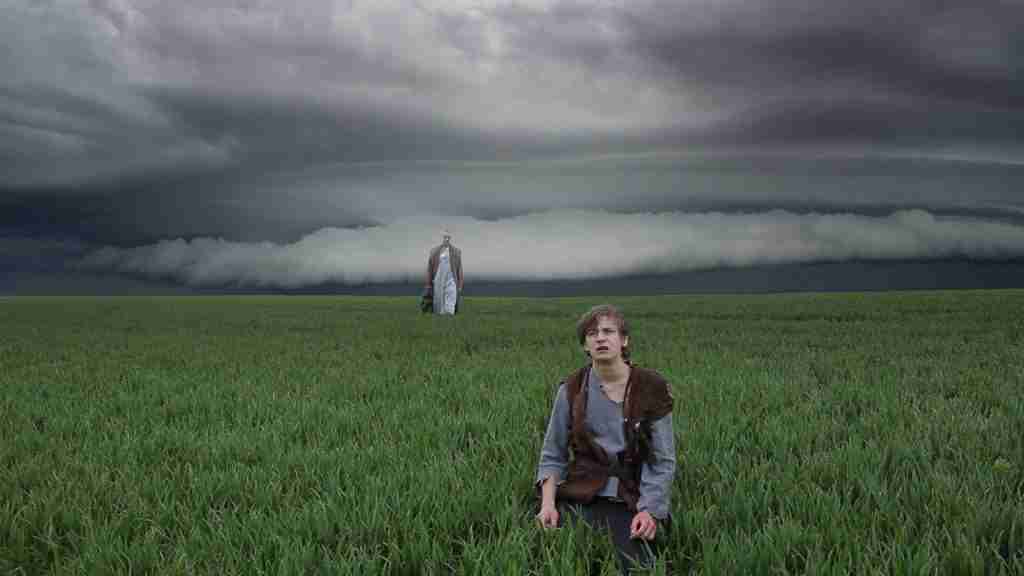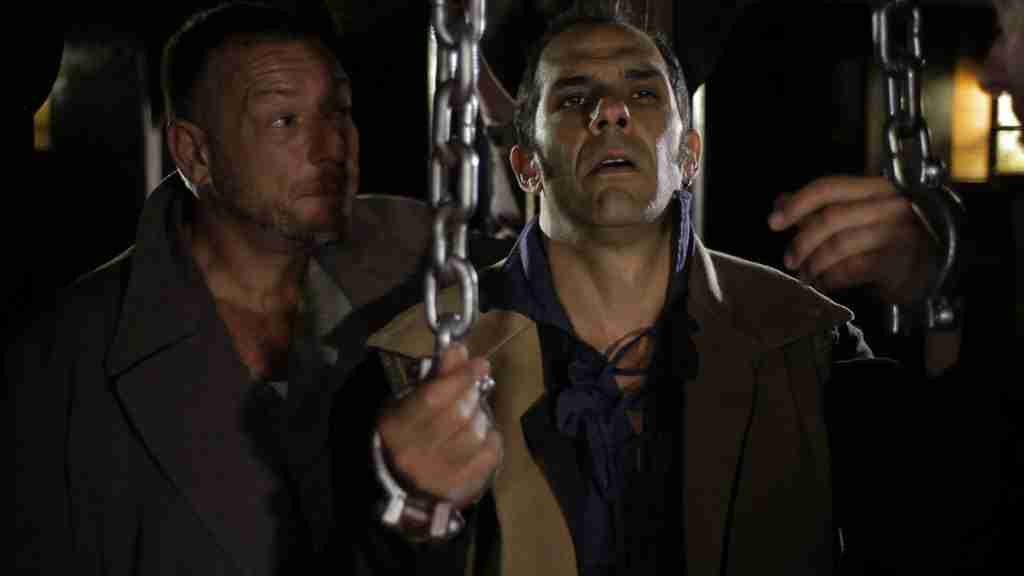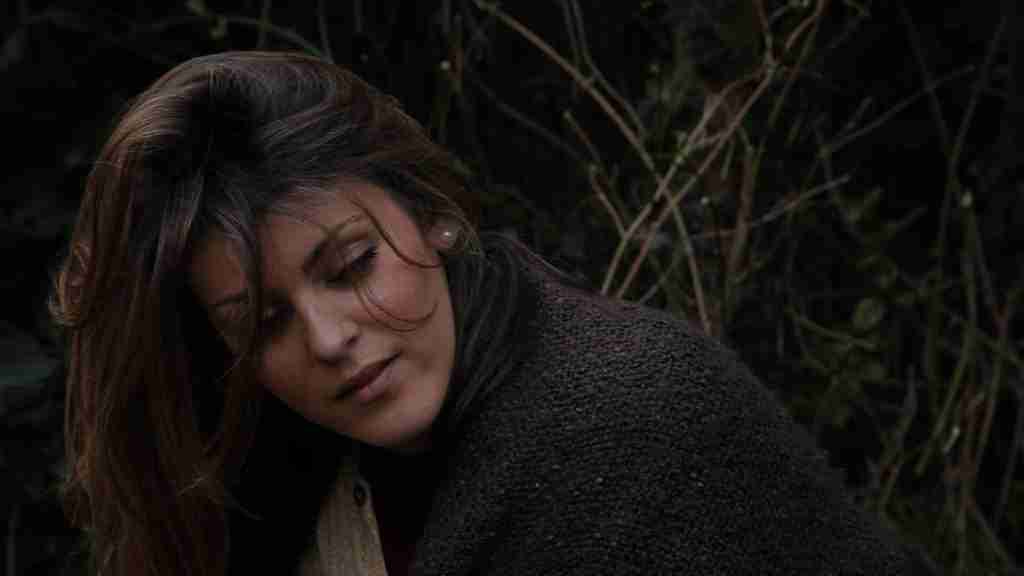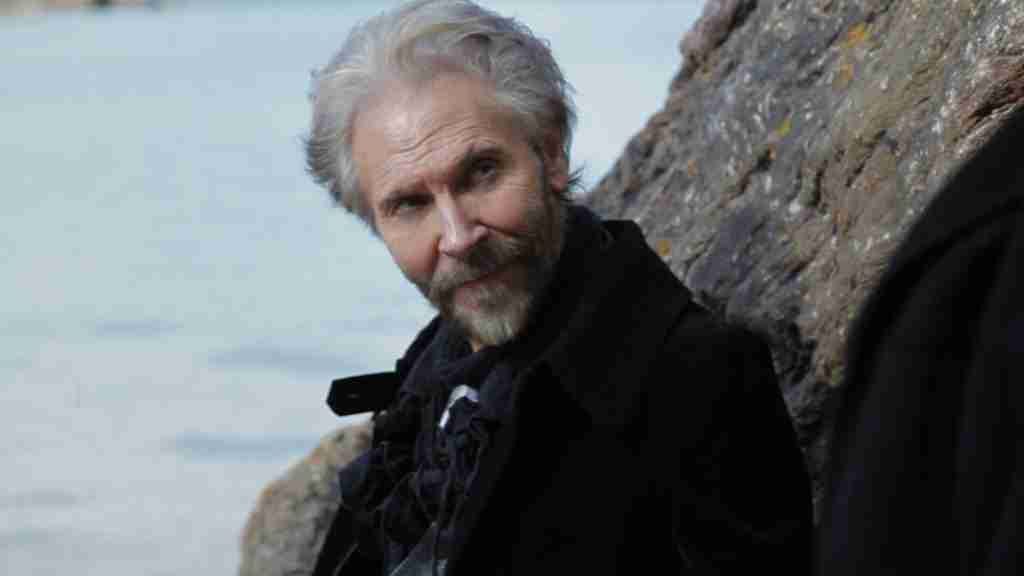
The amazing crossover of genres “The Lost Mantle of Elijah” was selected for the the third edition of Indiecinema Film Festival, among feature films!
On 17th May 2024, during a special event completely dedicated to the British cinema, The Lost Mantle of Elijah will have its Italian premiere at “La Bottega dell’Attore”, such a cool place located in Rome, Via dei Volsci 3. This amazing crossover of genres, selected for the third Indiecinema Film Festival’s feature films competition, will be screened together with the English short movie in competition Fragile Reflections.
While Fragile reflections director Andrew Short sent us a nice video message from UK, just to explain his work’s inspiration, we had such a long and interesting conversation with Lewis Critchley, who directed the already mentioned The Lost Mantle of Elijah . And you can read all this just here, just now!

Themes of the movie
Lewis, could you share where the initial inspiration for the narrative of “The Lost Mantle of Elijah” came from, considering its mix of adventure, fantasy, and biblical themes?
Certainly. I drew inspiration from a desire to blend adventure and fantasy while exploring contemporary conspiracy theories, such as banking practices and the concept of hidden rulers akin to pirates. Personal experiences and reflections on relationships also influenced the narrative, aiming to evoke Yrp the spirit of classic films like Rio Bravo and The Three Musketeers. My goal was to create an enjoyable and thought-provoking experience, much like the films that inspired me.
Your film seems to resonate with both believers and skeptics, touching on themes oflife, destiny, and values. Can you elaborate on your approach to juxtaposing the Old Testament and Gospel spirits imaginatively?
Indeed, my intention was to present a narrative that speaks to both believers and skeptics,exploring the contrast between the Old Testament and Gospel narratives. By envisioning what would happen if characters like Elijah were to reappear in a modern context, I aimed to provoke thought on themes of faith, divine intervention, and the complexities of religious doctrine. The film serves as a “what-if” scenario, challenging traditional interpretations while honoring the essence of Christian faith.

A cool mix of genres with fascinating locations
Your film encompasses elements of classic adventure films, evoking nostalgia for viewers. How did you approach incorporating these elements into your narrative, and are there any particular films in this genre that you hold dear?
I have a deep appreciation for classic adventure films like Star Wars: The Empire Strikes Back, which inspired my love for filmmaking from a young age. I aimed to capture the excitement and wonder of those films in The Lost Mantle of Elijah, emphasizing practical effects and realworld locations to create an immersive experience. While modern adaptations often fall short, I believe in staying true to the essence of storytelling that captivated audiences in the past.
Locations play a significant role in your film. Could you highlight some of the main locations and their significance in shaping the narrative?
The locations, such as the Black Church and the Golden Hind, were carefully chosen to evoke thematic elements and add depth to the story. Each location serves as a backdrop for the characters’ journey, reflecting their struggles and triumphs. Filming at iconic sites like Bartholomew’s the Great in London added authenticity and visual richness to the narrative, enhancing the overall cinematic experience.

Visual effects and actors
Visual effects are integral to your film. How did you approach incorporating CG elements, and what role do they play in enhancing the storytelling?
Visual effects played a crucial role in bringing the world of The Lost Mantle of Elijah to life. I dedicated significant time and resources to ensure that CG elements seamlessly integrated with practical effects, creating a visually stunning and immersive experience for the audience. By leveraging cutting-edge technology like Unreal Engine, we were able to push the boundaries of storytelling and deliver a truly captivating visual spectacle.
The film features a diverse cast of characters. How did you go about casting, and do you have any standout experiences with the actors?
Casting was a collaborative process, with each actor bringing their unique talents and energy to the project. I relied on a combination of personal connections and professional networks to assemble the cast, ensuring that each role was filled with the perfect fit. Working with actors like Paul Asmar and Tayo Oyekoya was a pleasure, and their dedication to their craft elevated the film to new heights.

From the soundtrack to new projects
Music plays a vital role in setting the tone for the story. Can you share your approach to incorporating music, and were there any specific inspirations for the soundtrack?
Music was integral to capturing the epic scale and emotional depth of the narrative. I worked closely with a composer to craft a score that complemented the visuals and enhanced the storytelling. Drawing inspiration from classic films like Star Wars and British composers like William Walton, we created a soundtrack that resonated with audiences and added layers of complexity to the film’s themes.
Apart from “The Lost Mantle of Elijah,” you have other film projects in the pipeline. Could you provide some insights into your upcoming projects, such as “Beasts of Nemesis” and “Soulmate”?
Beasts of Nemesis is a thrilling sci-fi feature film that explores themes of magic, AI, and the nature of consciousness. With a talented ensemble cast and international production team, it promises to be an unforgettable cinematic experience. Soulmate, on the other hand, is a sci-fi feature film based on my original screenplay, delving into themes of love, sacrifice, and redemption. Both projects showcase my passion for storytelling and commitment to pushing the boundaries of the genre.
Your experiences with E Signs seem to have influenced your filmmaking journey. How have your background in design and installation informed your visual style and approach to filmmaking?
My background in design and installation has been invaluable in shaping my visual style and approach to filmmaking. The attention to detail and craftsmanship I honed through E Signs translates seamlessly into the world of filmmaking, allowing me to create immersive and visually stunning environments. Whether it’s designing intricate sets or incorporating practical effects, my experiences have equipped me with the skills and knowledge to bring my creative vision to life on the screen.
Finally, how do you perceive the landscape for independent filmmakers tackling complex genres like fantasy in the UK, and do you see opportunities for growth and innovation in the industry?
The UK offers a wealth of opportunities for independent filmmakers looking to explore complex genres like fantasy. With its diverse landscapes and rich cultural heritage, there’s no shortage of inspiration for storytellers. While challenges certainly exist, such as funding and distribution, I believe that with passion, perseverance, and innovation, independent filmmakers can carve out their niche and make their mark on the industry. As long as there are stories to tell and audiences eager to experience them, the future looks bright for independent cinema in the UK.




